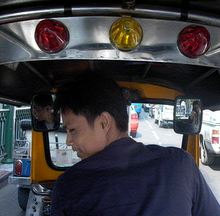After reading Tanizaki’s novels, followed by Calvino’s, the contrast between the two is indeed striking. Tanizaki is definitely a master (along with Yukio Mishima and Yasunari Kawabata) in capturing beauty in tranquility, perversity, and sadness, revealing the darker side, psychologically repressed life. Meanwhile, Calvino (like Umberto Eco) is a master in finding humor, irony, wittiness, quirkiness in an otherwise mundane and even death-threatened life (think of the movie “Life is Beautiful”). Could these reflect the particularity of Japanese and Italian societies?
Here’s how Tanizaki pictures the built environment:
“I found the house easily. For a few minutes I walked up and down the street in front, studying the layout. There was a fine stone gate, beyond which the grounds were densely wooded. A gravel path weaved through the trees and shrubs to a secluded entrance. The faded writing on the nameplate, “Okubo Villa,” and the mossy stone wall surrounding a spacious garden gave the place the look of a venerable estate, rather than of a summer residence.”
From Tanizaki, J., “Naomi”, 1924. Translation by Chamber, A.H., Tuttle Publishing, 1985: 138.
Here’s how Calvino depicts the city:
“The city of cats and the city of men exist one inside the other, but they are not the same city. … in this vertical city, in this compressed city where all voids tend to fill up and every block of cement tends to mingle with other blocks of cement, a kind of counter-city opens, a negative city, that consists of empty slices between wall and wall, of the minimal distances ordained by the building regulations between two constructions, between the rear of one construction and the rear of the next; it is a city of cavities, wells, air conduits, driveways, inner yards, accesses to basements, like a network of dry canals on a planet of stucco and tar, and it is through this network, grazing the walls, that the ancient cat population still scurries.”
From Calvino, I., “The garden of stubborn cats”, in “Marcovaldo, or The seasons in the city” 1963. Translation by Weaver, W., Harvest Book, 1983: 101-102.




No comments:
Post a Comment